Château Margaux: 40 years on
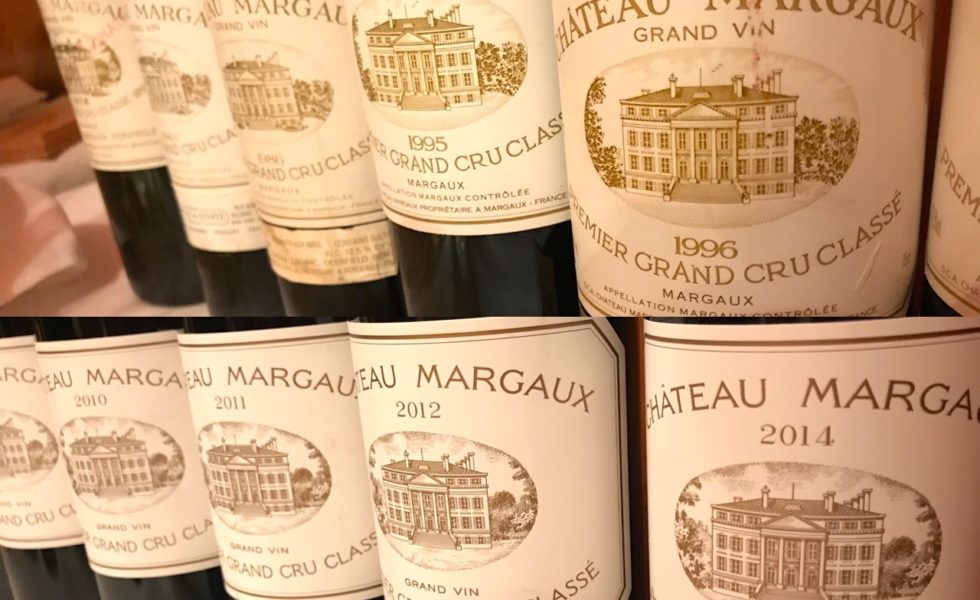
Vertical opulence, with Thibault Pontallier: 1978-2014
By Panos Kakaviatos for wine-chronicles.com
2 June 2018
Over dinner on 9 May this year, I was lucky to attend a vertical of this magnificent first growth from the Médoc: the highly acclaimed – à juste titre – Château Margaux.
Vintages included the first-ever under the Mentzelopoulos family, the 1978, which showed quite well. We also enjoyed stars like 1983, 1996 and 2010, among others.
The true star was none other than Thibault Pontallier, who had flown to Washington D.C. from Los Angeles that same day for this dinner, which was held in a Baroque style private room at the Spanish restaurant Taberna del Alabardero. I had organized a vertical dinner of Château Pichon Longueville Comtesse de Lalande at this restaurant late last year.
Thibault had been in Copenhagen, Denmark a few days before: promoting a super brand means traveling. Born in 1986 in Bordeaux, he is the son of Paul Pontallier, who had been making wine for the estate since his first vintage there of 1983.
Tragically, Paul left us in 2016, at the all too young age of 59. Although Paul had been managing director of Château Margaux since 1990, he first joined the estate in 1983 at the age of 27, after graduating as agricultural engineer with a doctorate in oenology.
Many participants spoke fondly of their experiences with Paul, as he had been the face of the estate for so many visitors, including some at our dinner table. Paul always combined humor, knowledge and friendliness when presenting the wines of the estate. Michael Sands of Calvert Woodley in Washington D.C. for example recalled several occasions visiting the château with clients.
He also recalled the 150th anniversary dinner at Château Margaux, back in 2015, where Paul made a speech about the history of the estate and inaugurated a new cellar space.
It was a magnificent evening of beauty and splendor. Sadly, 2015 was Paul’s last vintage. As for the quality of Château Margaux 2015? Easily a candidate for wine of the vintage.
A bit of (recent) history
Much information can be read on the well designed website of the château. Suffice to say that Château Margaux was only one of four wines deemed “first” in the famous 1855 classification of wines from the Médoc and Sauternes. Only Margaux was marked 20 out of 20 (the French grading system, where 20 is the very top score). This classification, which maintains an (official) validity today, confirmed the qualitative hierarchy illustrated by the great price differences that had been practiced on the world market for a long time. In the XVIII century, the “first growths” were already being sold at twice the price of the “second growths”. Moreover, the 1855 classification succeeded over other more informal classification attempts like that of Thomas Jefferson in the XVIII century. Under the Second Empire, there’s little to say other than Bordeaux experienced a truly golden age, thanks to the building of a railway to Paris, but also thanks to the rapid expansion of commerce, facilitated by the agreements of free exchange inspired by the liberal ideas of the Emperor. It’s certain that Napoléon III had a lot to do with the upturn of Bordeaux viticulture.
Fast forward to 1978, when André Mentzelopoulos acquired the château, and revived its fortunes in the modern era. His daughter Corinne Mentzelopoulos hired Paul on a recommendation from the legendary French winemaker Emile Peynaud.
As owner, following the death of her father, Corinne could not find a better partner in Paul as director: they worked very closely to make some of the world’s best Cabernet Sauvignon-driven wines. They sometimes presented the wines together and a happy complicity seemed evident. I recall visits to taste the wine with both eagerly presenting the latest vintage. The transformation of Château Margaux that had begun under André Mentzelopoulos continues to this day.
The dinner
Thibault was clearly happy to be with a group of wine lovers: each of us brought at least a bottle of Château Margaux to the dinner. He appreciated that we brought many bottles of Château Margaux for the dinner, which was put together by wine writer Bijan Jabbari. I brought a bottle of 1999, for example, and a bottle of Pavillon Blanc. Sands brought no less than three recent vintages: 2011, 2012, 2014.
And Thibault himself shipped a bottle of the famous 2010. “It is rare to have so many of our wines, including the 1978 and 1983, my father’s first wine,” Thibault told us. We also had his birth vintage of 1986, as well as his sister’s vintage (1996), and his brother’s, the aforementioned 1983.
Thibault worked in Hong Kong for seven years to promote the brand: the château’s first Asia representative since 2010. Before moving to Hong Kong, Pontallier lived in Vietnam, Norway, Italy, Spain and New York and graduated from HEC Paris Business School with a double Master’s degree in Management.
It was great to see sommelier Maria Ortiz and the staff of Taberna del Alabardero, who provided excellent service throughout the dinner, including the opening with Champagne brought by participants as well. Kudos to the chef, as well, for the excellent food: the high quality and thoughtful pairings brought out the best in the wines served.
Tasting notes: As usual, if in bold, I liked in particular. If red and bold, even more. And the added underline means wine nirvana.
An excellent series of Champagnes
Great to compare two Rosés de Jeanne and then enjoy a splendid 1990 Comtes de Champagne at the dinner table.
- 2007 Roses de Jeanne / Cédric Bouchard Champagne Blanc de Noirs Les Ursules – France, Champagne
Coming from a magnum bottle, this showed evidently more freshness than it would have from a regular bottle. Just love the purity of fruit, a breadth and richness from the vintage, as well as a tonic bitterness that beckons further drinking. The bubbles are very fine and the texture alluring. Great Champagne! (94 pts.) - 2009 Roses de Jeanne / Cédric Bouchard Champagne Blanc de Blancs La Haute-Lemblé – France, Champagne
From a Blanc de Noirs, now to a Blanc de Blancs, and made from first press juice, hand harvested and fermented using indigenous yeast. Bottled unfined and unfiltered, this is a scarce bottling, regular format, showing depth and vigor, more so than the 2007 from magnum, tasted just before, but I think I preferred the 2007 for a slightly superior freshness on the palate. Perhaps it is just the vintage difference. (93 pts.) - 1990 Taittinger Champagne Brut Blanc de Blancs Comtes de Champagne – France, Champagne
I love the elegance here. Such finesse on the palate, such fine citrus notes including lemon cake. The warmth of the vintage yields baked apple (more a suggestion) with burgeoning oxidative notes that do not obstruct but rather enhance the experience: almond and touches of hazelnut, but never going to “Sherry”. There is opulence as well as wet stone like purity. A finish that is bracing yet balanced. (95 pts.)
Four whites from Château Margaux
The 2002 that I brought was sadly oxidized, but the other three each had their merits. Perhaps the 2006 was the most surprising – and certainly the wine of the flight. Bravo to the chef for preparing a delectable roasted tuna with mango guacamole that was not too spicy but whose texture agreed with the whites rather than clashed.
- 2002 Pavillon Blanc du Château Margaux Blanc – France, Bordeaux
This was sadly oxidized. On the palate, there is structure to be sure, but there is too much Sherry to be really considered for “point scoring” - 2006 Pavillon Blanc du Château Margaux Blanc – France, Bordeaux
I recall trying this en primeur, from barrel, back in the spring of 2007 and feeling let down. The alcohol seemed too much: nearly 15 degrees! The tropical notes also seemed over done. And of course 2006 has a reputation for being a “fat” vintage in Bordeaux. Generally speaking, 2007 and especially 2008 are better for whites. But lo and behold, this has turned out to be quite delicious! In his personal notes to the wine, Paul Pontallier suggests that the terroir may be “getting revenge” on the vagaries of the climate. The richer style is there, and it was the most powerful of the four whites. It showed off very ripe pear as well as white apricot, but a certain serious “minerality” that balanced the density and somewhat thicker texture on the palate. Cellaring conditions impeccable, stressed Kevin Shin, who brought the bottle. (94 pts.)
- 2010 Pavillon Blanc du Château Margaux Blanc – France, Bordeaux
A relatively more steely aspect as compared to the other whites tasted in this series. Sure, it exudes fine balance between the acidity and the (relative) fat, but lacks the “personality” of the 2006 and the nuanced richness of the 2015. Could it be in a somewhat mute phase? Normally 2010 whites are more expressive. (90 pts.) - 2015 Pavillon Blanc du Château Margaux Blanc – France, Bordeaux
Perfect harvesting conditions reflect this wine: the Sauvignon Blancs achieved excellent ripeness and concentration, which shows in this wine! Not only is the red Margaux a legend in the making, but the white counts among the top dry whites of the vintage. Harvesting earlier here than in 2006, one gets more freshness, and yet an opulent expression of fruit, with touches of tropical including kiwi as well as ripe apricot. It is still too young to truly enjoy, but one can see that its concentration and nuance augur very well for the future. (94 pts.)
The oldest Margaux reds of the evening
This flight featured not only the first wine of the Mentzelopoulos era, but also the first wine made by Paul Pontallier as director – and the birth year of son Thibault Pontallier. Wine of the flight goes to the 1983. The duck confit proved a most agreeable pairing.
- 1978 Château Margaux – France, Bordeaux, Médoc, Margaux
What a lovely nose, although perhaps just a bit of brett? On the palate, there seems more freshness and leafy earth that harkens to an Older School of winemaking: this was the very first vintage of then new (now current) owners the Mentzelopoulos family, and pretty good for its nearly 40 years of age. A participant brought this wine that he purchased recently for about $400, he said. While Chris Bublitz, seated across from me, recalls buying the 1978 on release for just over $30. In short, I like the leafy mentholated style. Going back to it, you do get slightly greener tannins. A wine to enjoy with steak! (91 pts.) - 1983 Château Margaux – France, Bordeaux, Médoc, Margaux
The first vintage made by Paul Pontallier for the estate and my preference in this flight of 1978-1983-1986. “Effortless power,” remarked Michael Sands of Calvert Woodley. I just loved the graphite and pencil lead here, along with beguiling aromatics of dried flowers, pot-pourri, patchouli and orange rind. The palate was deceptively soft, as the tannic grip showed on the finish, but in a softer register than – say – the wines of the 1990s that tried later. A vintage that followed a legend (1982) but that particularly favored “Margaux”, as August rain was not as pronounced in Margaux as in other parts of Bordeaux… The wine leaves you with the impression of seductive perfume – and it is so ready to enjoy today. (96 pts.)
- 1986 Château Margaux – France, Bordeaux, Médoc, Margaux
My first impression was just “wow” because of the evident power and tannic edge. Certainly showing the greatest affirmation of tannin, and I was asking, with time in glass, whether this was a Pauillac or a Margaux. Later over dinner, Thibault Pontallier – who was born in 1986 – compared it to the 1995 that we tried later in the evening, in the tannic sense. Of course the tannins of the 1986 will “come around” but, for all its impressive power, I am not sure that it will ever reveal the perfumed charms and nuances of the 1983. Maybe I’m being too hard on it. A wine to follow! (94 pts.)
The 1990s
The 1990 is perhaps the best of the decade, but 1996 is not far behind: what a gorgeous wine that was in the series and the wine of the flight, if not wine of the night (when taking into account more current drinking). The tender, grilled black Angus tenderloin was a perfect match.
- 1995 Château Margaux – France, Bordeaux, Médoc, Margaux
In his notes for the vintage, Paul Pontallier compares the 1995 to the 1986: “a true great vintage of power, depth, richness and complexity” he wrote. It was amazing how this first wine from the 1990s that we tried for dinner differentiated itself from the 1980s: far more youthful in aspect and while similar to the 1986 in tannic profile, the tannins seem to be accompanied by more roasted fruit. They are firm tannins, and even hard, as compared to the (superior) 1996, which came next. Could the heat of August have made the tannins a bit too hard, in terms of the fresher year 1996 – whose Indian summer permitted a better “hang time” for the Cabernets? Perhaps. In any case, the 1995 should evolve well, but I am not convinced that the tannins will ever calm down enough to shed a somewhat harder aspect. (94 pts.)
- 1996 Château Margaux – France, Bordeaux, Médoc, Margaux
What a gorgeous wine! Paul Pontallier’s notes on this vintage are so on target to the bottle we enjoyed this evening: “The Cabernet Sauvignon has seldom achieved such a perfection of style and such good balance,” he wrote. After the 1995, the nose already seemed to exude such ripe but such cooler fruit. The palate? Far more finesse than the 1995, which seems a bit “hotter” on the palate – going back and forth between the two. In this flight of three 95-96-99, going back from the charming 1999, the 1996 has riper mint aspects, and riper earth, too, as it shows touches of tertiary. The texture is oh so smooth and nuanced, and the finish lasts for at least 40 seconds. Pontallier ended his notes for this vintage as “a dream of a Margaux”. I agree. (99 pts.) - 1999 Château Margaux – France, Bordeaux, Médoc, Margaux
You want a bouquet of spring flowers, a fresh bouquet as opposed to the dry flowers of the 1983? This is your wine! There is a hint of bergamot tea as well, along with just a touch of that wet earthy aspect from the 1978, even if a (much) younger profile. The palate is lovely in its fluid and elegant sense, easy to drink, even though it certainly lacks the backbone of the 1996. “Delicacy and suppleness,” wrote Paul Pontallier. Is that not what Margaux wine should exude? (94 pts.)
Early to mid 2000s
Here we had a very interesting flight of rather different vintage profiles. While the 2000 clearly pulls ahead, the 2001 shows a gorgeous profile for more current drinking, the 2003 is not a caricature of the hot vintage and the 2006 is just too young to really appreciate at this stage.
- 2000 Château Margaux – France, Bordeaux, Médoc, Margaux
Should a point score reflect current drinking or future? For this wine, the high score is more for drinking in about five years time, for an early drinking window. And it may be conservative, as this could turn out to be 100 points, for all you point whores! Whatever the case may be, this was the star of this next flight of 2000-2001-2006. Obviously superior grip as compared with the 1999, which we enjoyed just before. Like the 1999, it displayed bergamot and floral aspects, but here they are more focused and more intense. The underlying tannin is indeed serious but more refined than those from the 1995, for example. Indeed, this gets the same high score as the 1996, but it is different from the 1996 in the sense that it may end up with a larger scale, more breadth, even if it may not ever match the cool fruit aspect of the 1996: both are top wines, but for different reasons. The 2000 has the power of the 1986, for example, but far more potential “Margaux” charm. Pity that it has gotten so bloody expensive! (98 pts.)
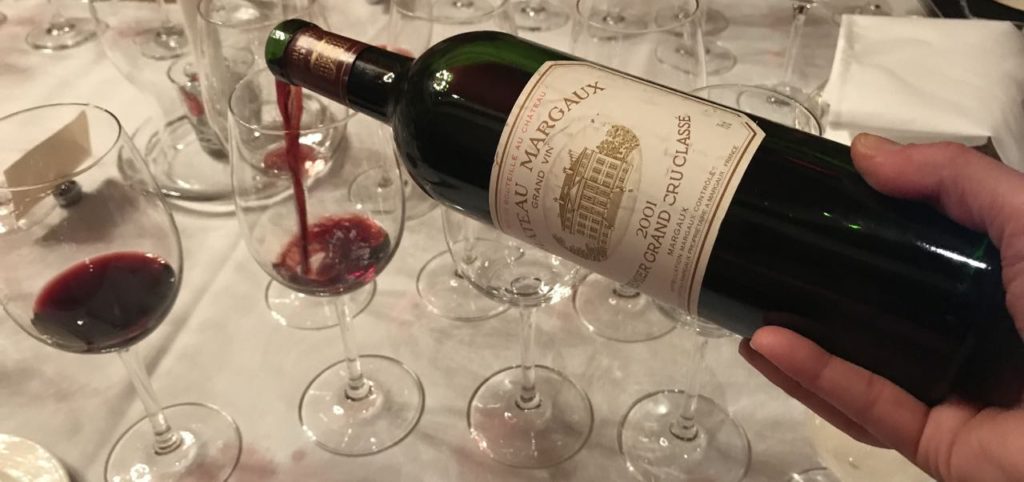
I recall a while back someone calling 2001 a “restaurant vintage” … Sure, we enjoyed this at a restaurant, but 2001 is far, far better than just that. A wonderful vintage!
- 2001 Château Margaux – France, Bordeaux, Médoc, Margaux
I see the average score on Cellar Tracker and have to say that this is one gorgeous bottle of Margaux, and that the price – still perhaps “relatively” low should be worth your consideration. Why? Why, the peony floral aromatics for one. Then the almost Burgundian purity of fruit, as if we were talking about a Chambolle Musigny in its expression of ripe red fruit berry and fresh earth. The palate is less intense and lacks the concentration and intensity and vivid nature of the 2000 to be sure, but you get such fine black tea aspects through to the long and precise finish. And substantial tannin to remind you that this ain’t no Pinot Noir but Cabernet. So this rather high score reflects more current drinking than later … (95 pts.) - 2003 Château Margaux – France, Bordeaux, Médoc, Margaux
This is not an exaggeration of the vintage at all as the aromatics are not overly ripe although one gets hints of roasted fruit that reveal, perhaps “would reveal” the 2003 aspect had this been a blind tasting. The attack is very appealing: red and black berry fruit, hints as noted of roasted fruit on the palate but subtle, then an almost velvety texture that pleases the mid palate to be sure. However, this has less depth than the 2000, and is noticeably shorter on the finish compared to the 2001, which is fresher – and longer. (93 pts.) - 2006 Château Margaux – France, Bordeaux, Médoc, Margaux
A note for current drinking… The wine is just beginning to open up, as the tannins seem a bit firm and raw, and there is a certain lack of comparative finesse here, after having had the 2001, for example, which is ready now to enjoy. The aromatics display floral aspects and sweet, ripe fruit, as well as some (perhaps) oak-derived chocolate aspects. The score is more for the wine’s potential in, say, 10 years. If you have any now, do not bother to open. (94 pts.)
Most recent vintages
The 2010 shines so bright, but is far too young to really appreciate. Second best is the 2014, so pure and linear and yet also too young. Perhaps the easiest to appreciate among these was the 2012, while the 2011 seems closed down and the least appealing.
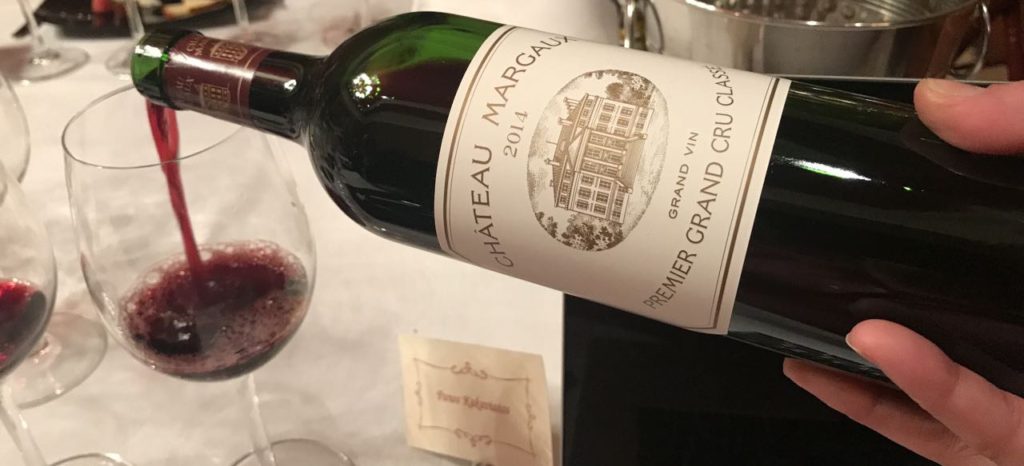
Of course, 2010 is the star of the flight, but 2014 – as so often in Bordeaux – is so underrated. It is an excellent vintage!
- 2010 Château Margaux – France, Bordeaux, Médoc, Margaux
OK, this note certainly reflects future drinking as the wine is not yet ready to drink. But what concentration! This was almost like a barrel sample. Loads of power: “It is like a 1900,” said Thibault Pontallier, referring to the legendary, turn of the century vintage, which I have never tried … A very impressive nuanced and imposing wine, its tannins refined yet foreboding: it has “more of everything” as compared to the other wines of this flight (2011, 2012, 2014), yet manages to convey clear floral elegance. A great Margaux! (98 pts.) - 2011 Château Margaux – France, Bordeaux, Médoc, Margaux
The structure here is certainly looser, when compared to the 2010. This is not really doing it for me and came across as the weakest of all the Margaux we enjoyed over dinner: the 1978 had more personality. Maybe I am being too hard on the wine, but the tannins were at once a bit rigid and kind of boring. Furthermore, optimal ripeness seems to be lacking. In any case, it is a wine made with great attention and coming from great terroir, so perhaps I underrate it. Perhaps with more time in bottle, it will get much better, but for my palate at this stage, I am not a huge fan of the 2011. (91 pts.)
- 2012 Château Margaux – France, Bordeaux, Médoc, Margaux
Much more charming than the 2011 to be sure, even if the finish is not as long as, say, the 2010 or even the 2014 for that matter. It has more “plump pleasure” and you get a barrel sample sense as well. Far too young! Coming back to this after trying the 2014, you get such pleasing ripe juicy fruit, both dark and red that it comes across almost sweet by comparison. I would think that what can be interpreted as “baby fat” will dissipate as the wine ages and it will become even more interesting. A lovely Margaux! (93 pts.) - 2014 Château Margaux – France, Bordeaux, Médoc, Margaux
What lovely fruit! What a focused expression on the palate, with fine tannins. The fruit is bright. There is visceral fruit expression here! And as Thibault Pontallier explained over dinner: after the very challenging 2013 vintage, vintners generally decided to be extra careful about selections: at Margaux but also elsewhere in Bordeaux. There is a burgeoning tobacco leaf aspect coming from the Cabernet and much ripe fruit throughout the palate. Sure, it is “barrel sample” like, and far too young, but already revealing “Margaux charm” and this will turn out to be gorgeous (even if it will not ever match the density of the 2010). I may be just a bit conservative on the scoring, especially for future drinking … (95 pts.)
Late harvest Sauternes and Barsac
By this time I was experiencing a bit of palate fatigue, especially since the evening before, I had taken part in another very comprehensive vertical of Château Lagrange. But I was perhaps most pleased by the Rieussec, as it seemed to exude the purest expression, even though it was facing tough competition!
- 1986 Château Rieussec – France, Bordeaux, Sauternais, Sauternes
I must confess, dear reader, to some palate fatigue after so many vintages of Château Margaux. But I loved this Sauternes! A cooler vintage, combined with a warm terroir and that equals sheer pleasure. Crème brulée nose and the palate is lovely with tobacco leaf and tea leaf. You get the botrytis notes as well as agreeable sweetness. And a long finish. Bravo! (95 pts.) - 1988 Château Climens – France, Bordeaux, Sauternais, Barsac
I have had better performing 88s from this estate, but it was really good. The sweet custard aspect to the palate, with botrytis spice beguiles of course, but it was not quite as “focused” at the Rieussec, tasted just beforehand, which kind of surprised me, given the vintage and the estate. Bottle issue, methinks. Or, my palate was just getting too tired! (94 pts.) - 1989 Château d’Yquem – France, Bordeaux, Sauternais, Sauternes
At this stage, my palate was just getting too tired. I did get the impression that it was not the freshest example of a 1989 Yquem, not that I have had that many, but thanks to Chris Bublitz and other fine drinking friends who bring such bottles, I can say that it seemed not to be the top example. The color was a bit darker than the 1988 Climens for example. But, again, my note should be taken here with a grain of salt. Sorry. (94 pts.)
Thanks to Bijan Jabbari for putting this dinner together, thanks to Thibault Pontallier, who graciously attended – and donated a 2010. And kudos to the staff at Taberna Del Alabardero for great food and service. Not to mention a most elegant private room setting. The food and wine pairings all proved successful.
 Wine Chronicles
Wine Chronicles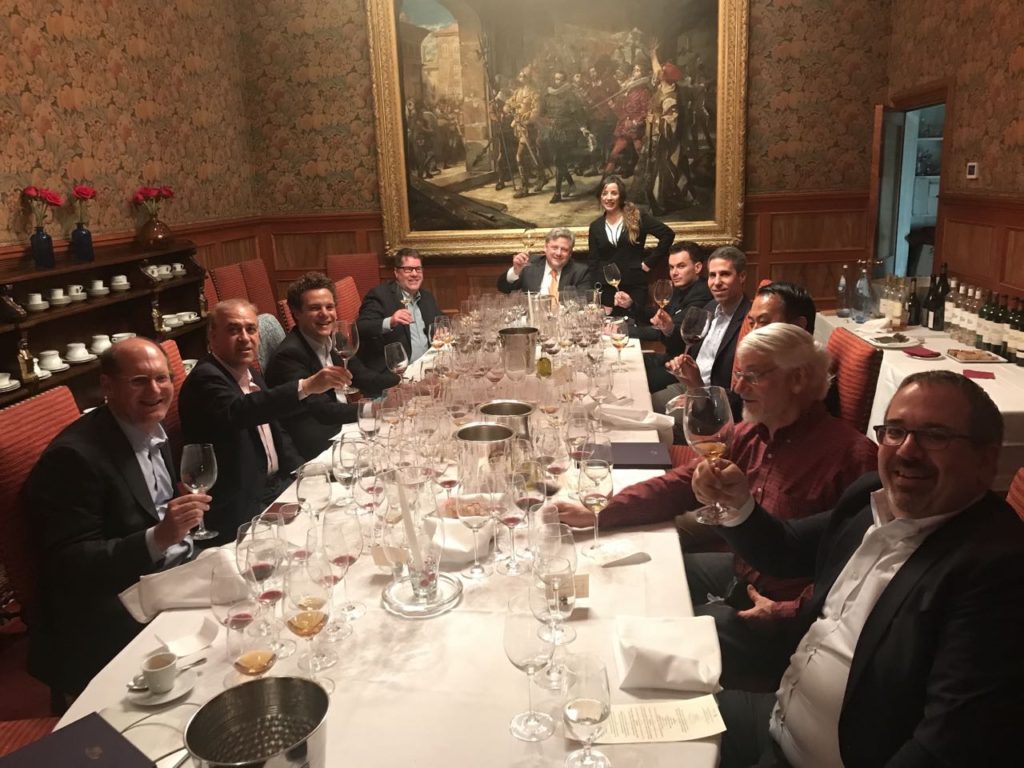
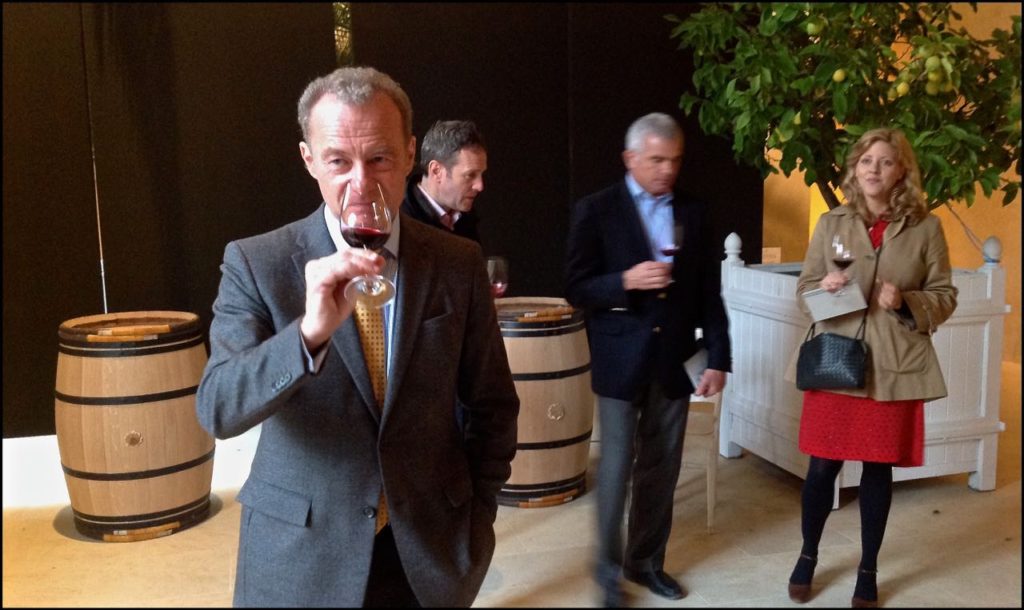
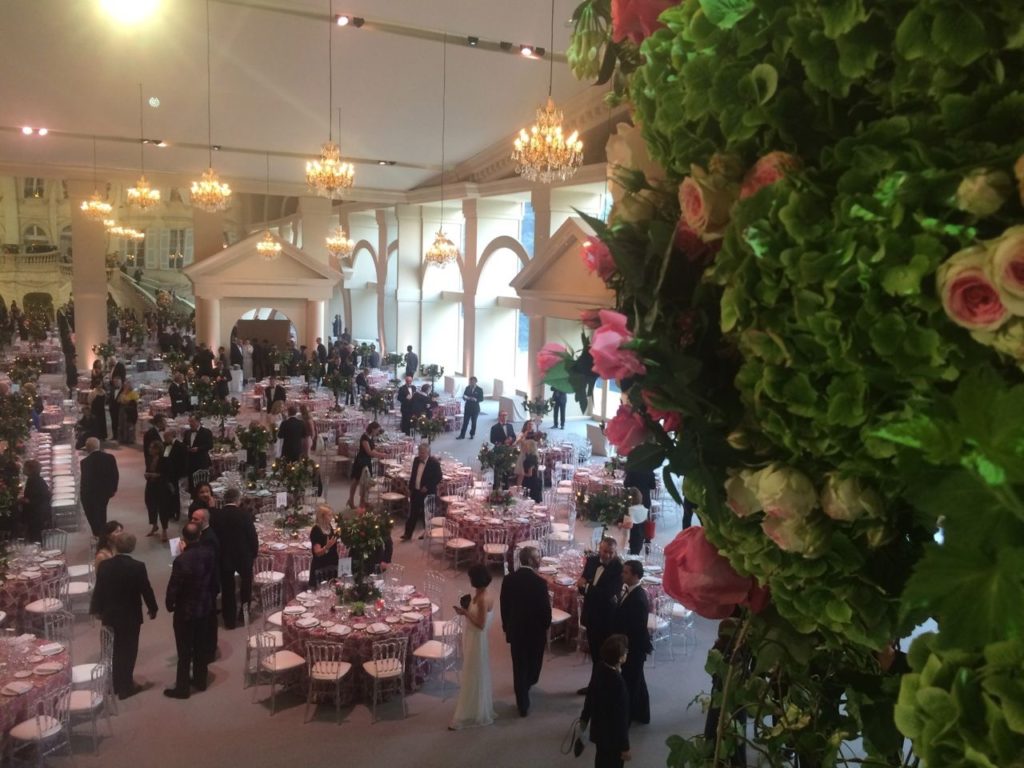
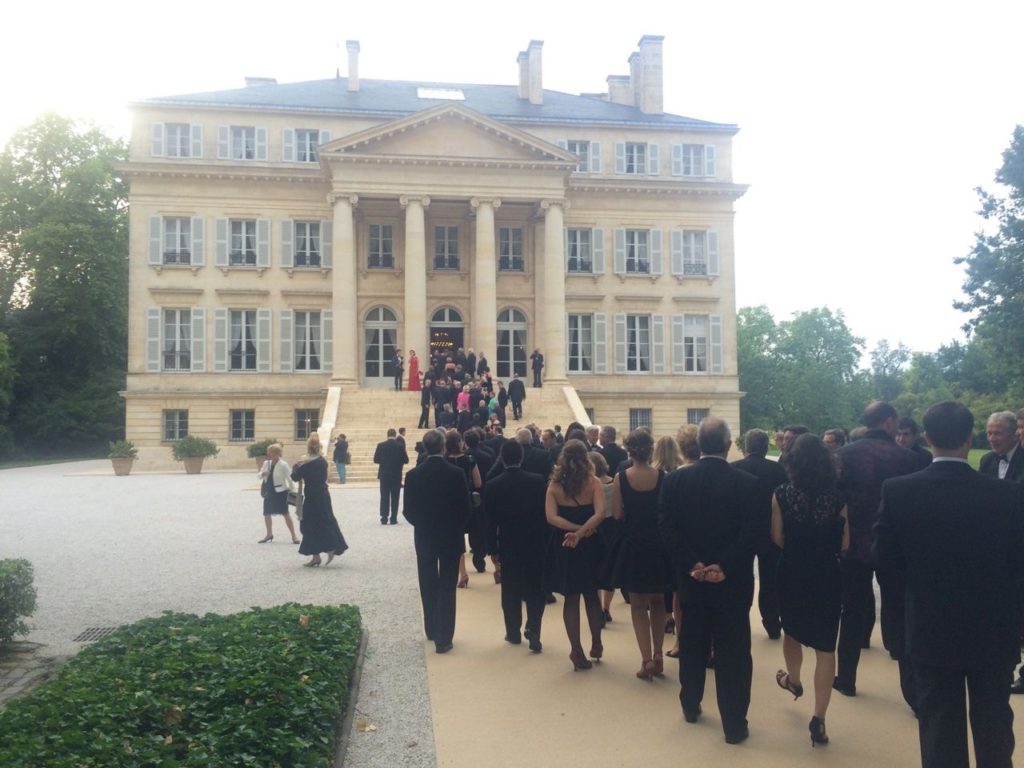
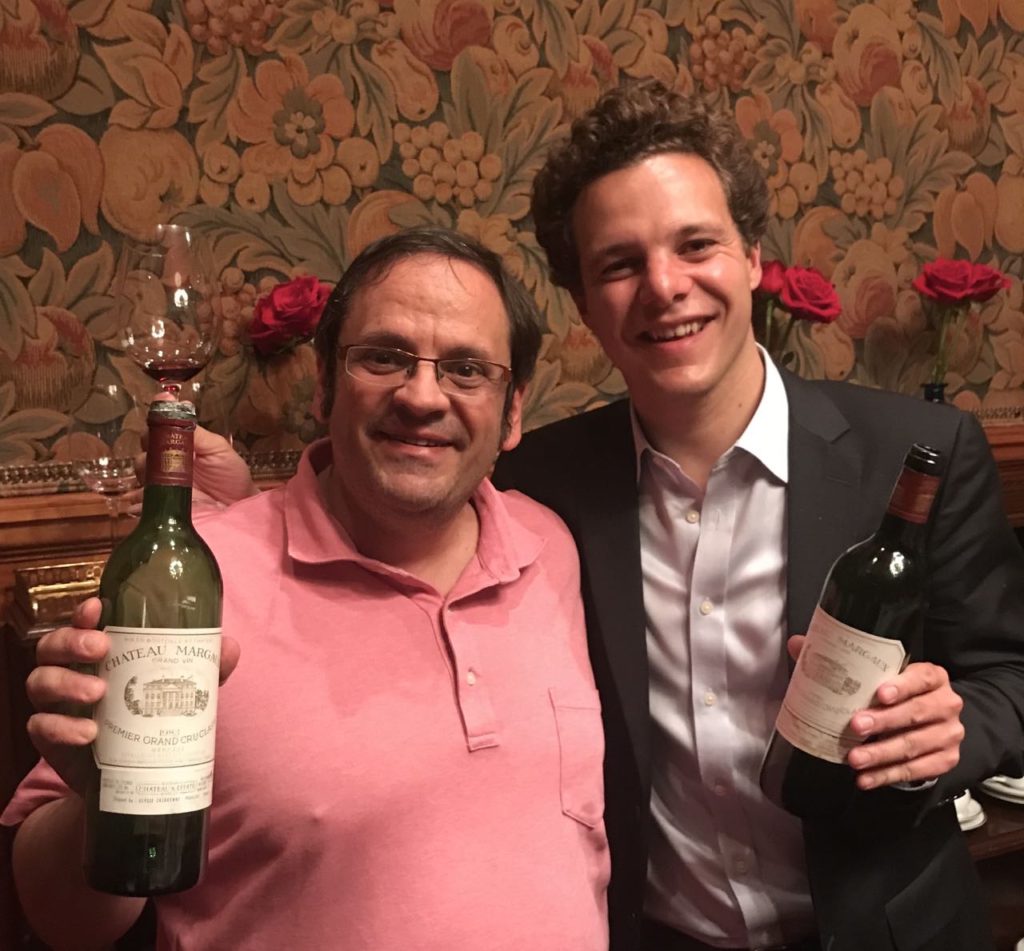
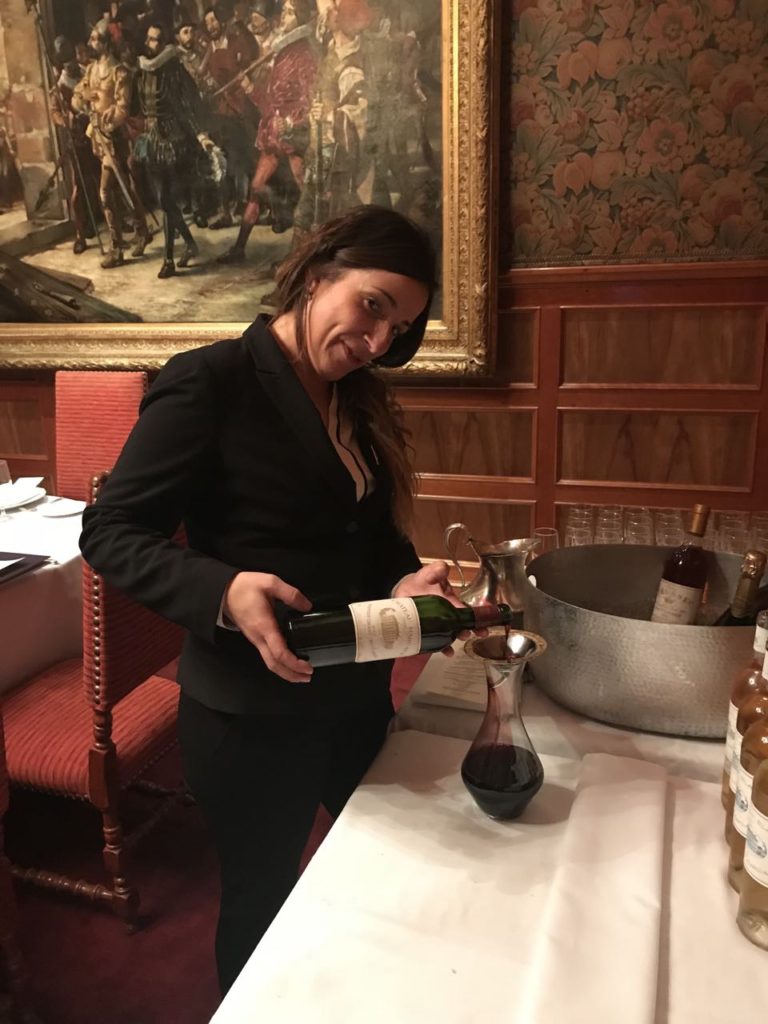
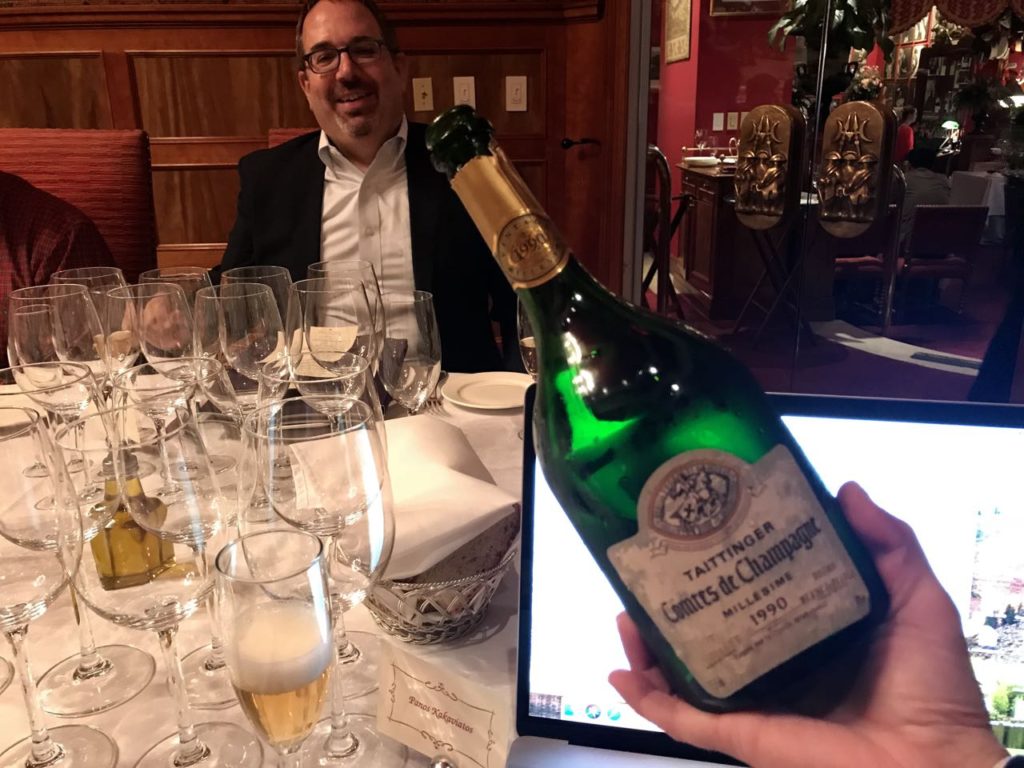
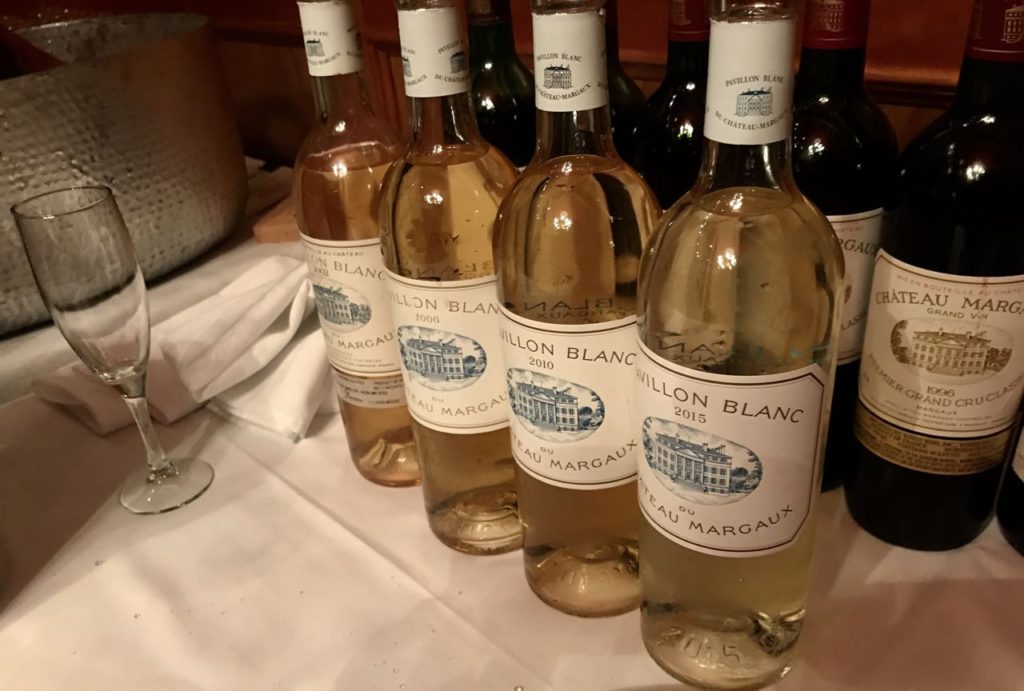
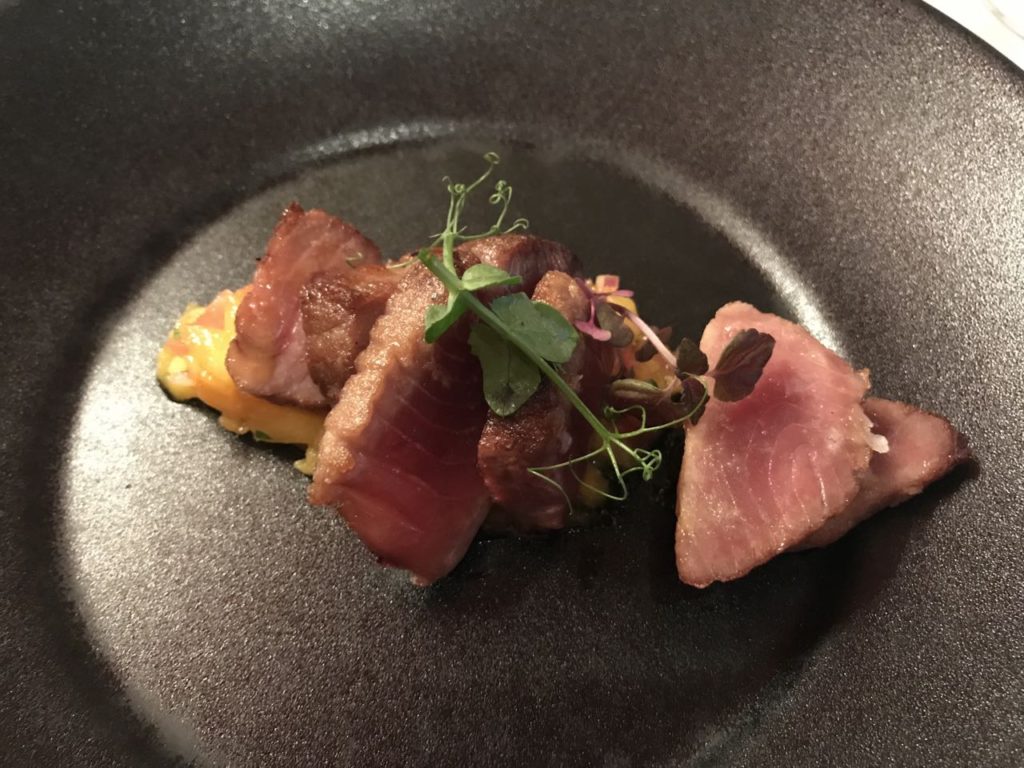
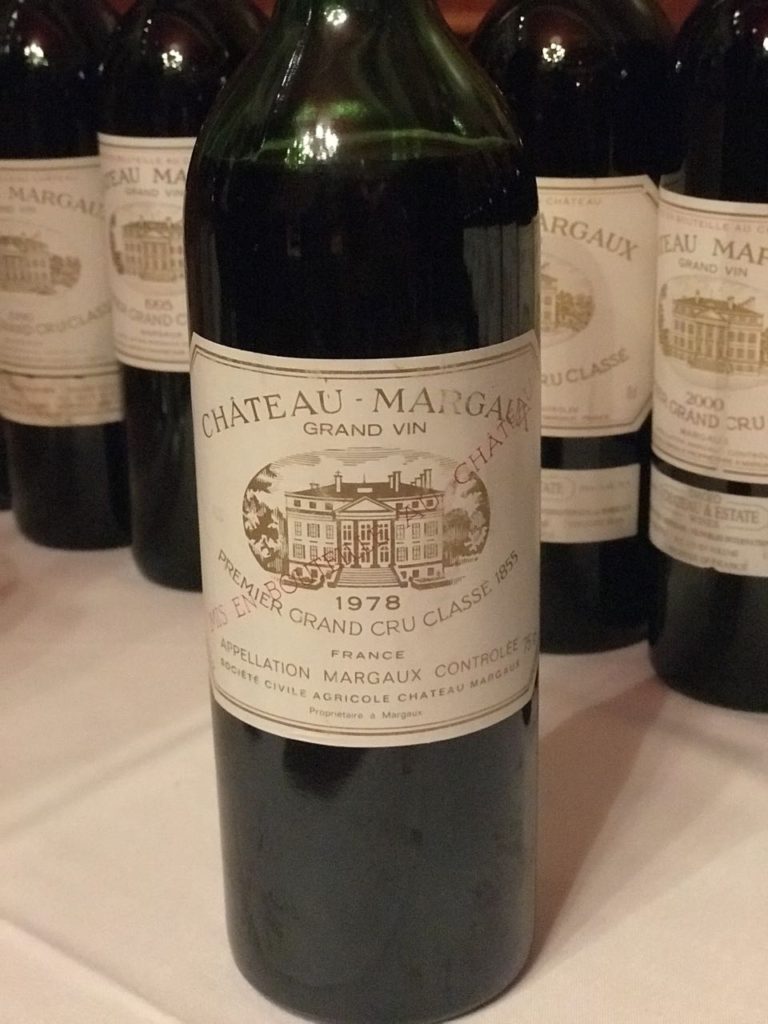
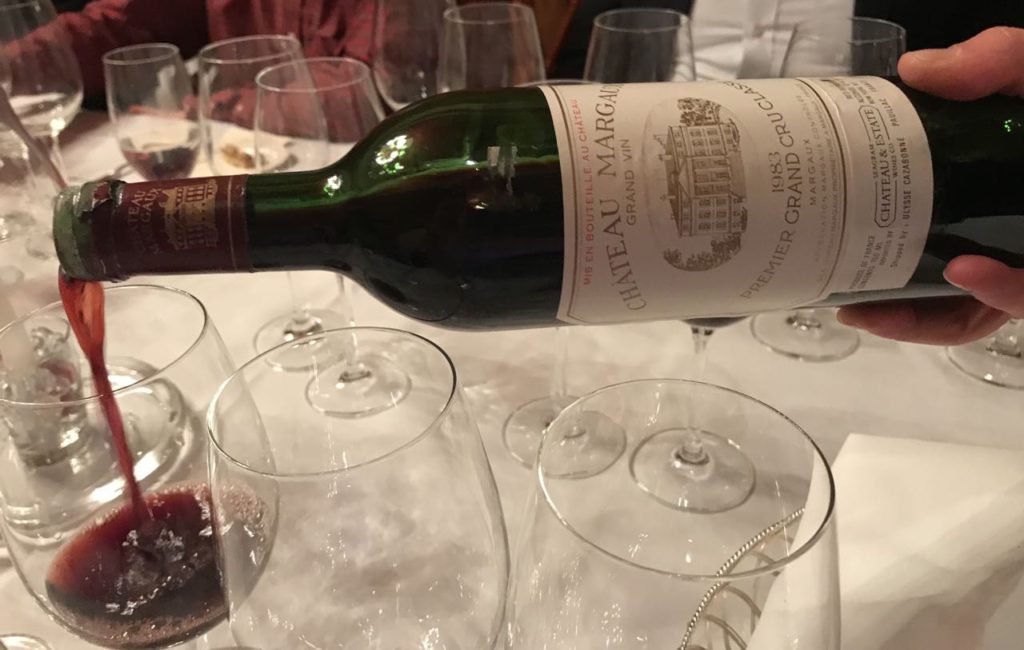


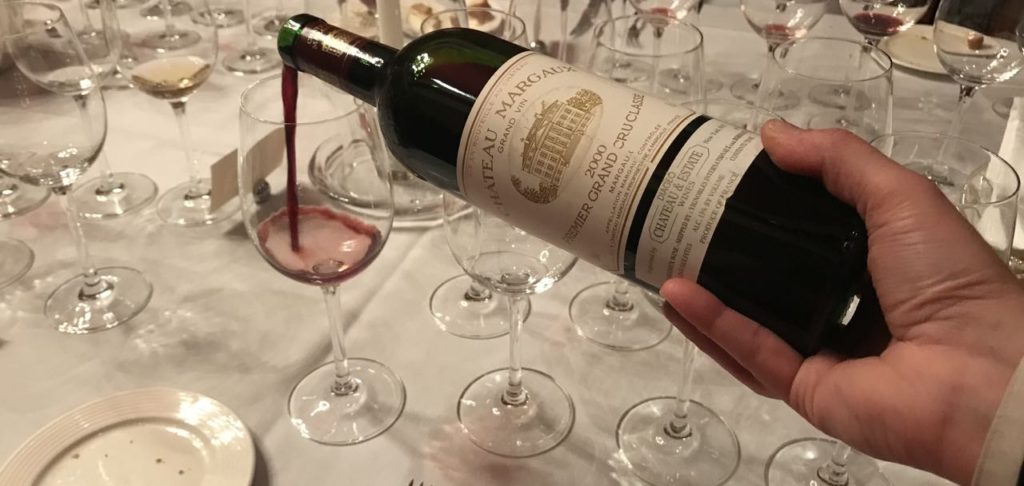
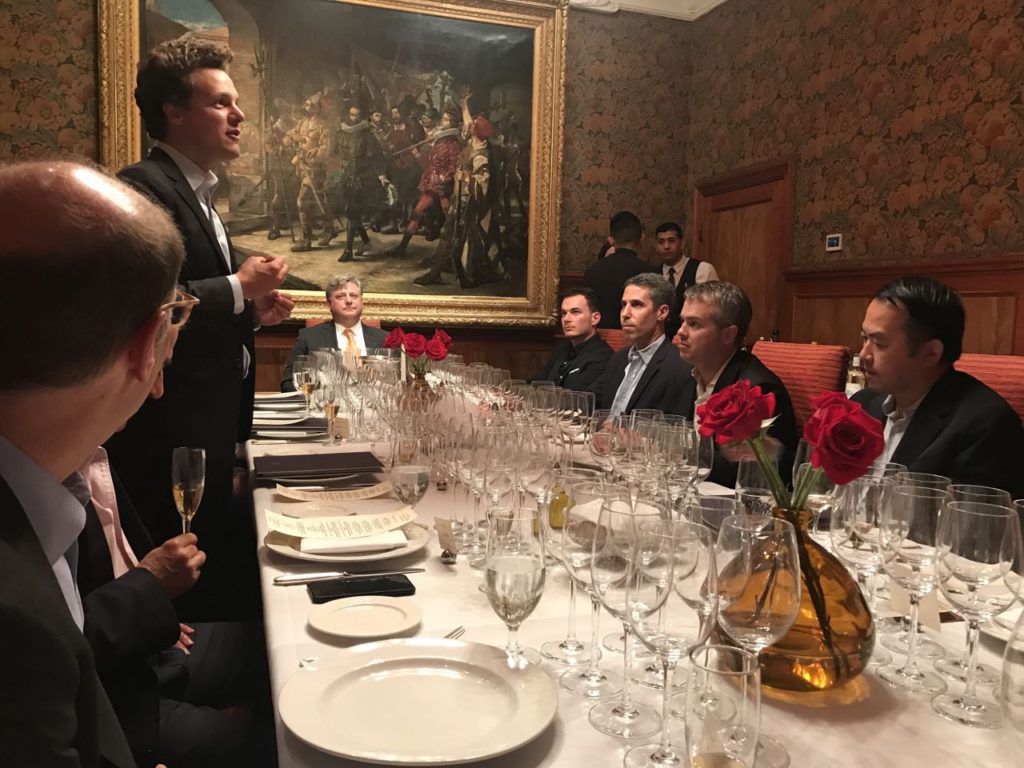
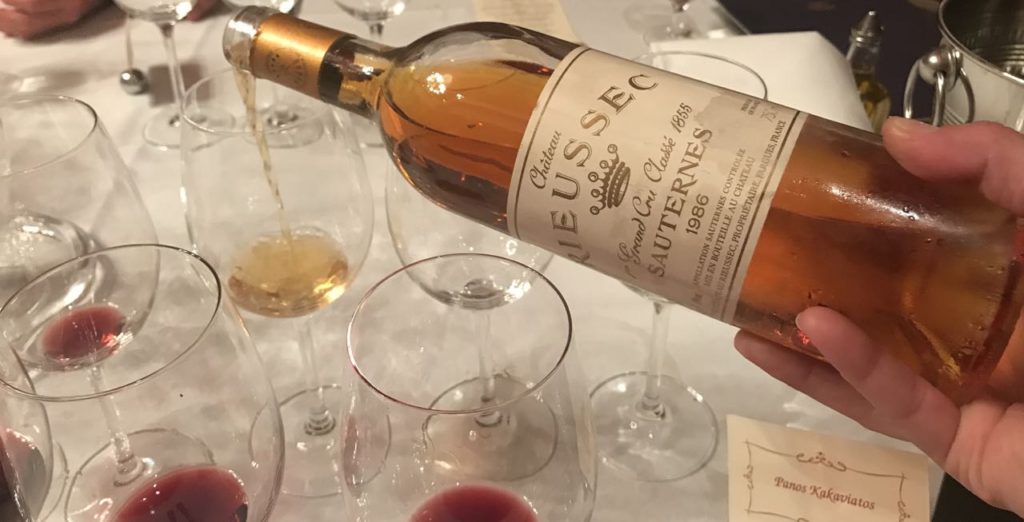
Share This